Iraq is home to a diverse range of avian species, with over 448 bird species recorded across the country. These birds are found in forests, wetlands, deserts, mountains, and agricultural areas.
Many of these birds are migratory, traveling thousands of kilometers every year to breed, feed or escape harsh weather conditions. Iraq’s strategic geographic location between Europe, Asia, and Africa makes it an important wintering and breeding ground for several species of birds.
The country’s rich birdlife adds to the natural beauty of the region and is a source of pride for Iraqis. However, human activities, including hunting and habitat loss, pose a serious threat to many of the bird populations in Iraq.
Understanding the bird species present in the country is essential for their conservation, and in this article, we will discuss some of the most notable birds of Iraq.
1. Sandgrouse
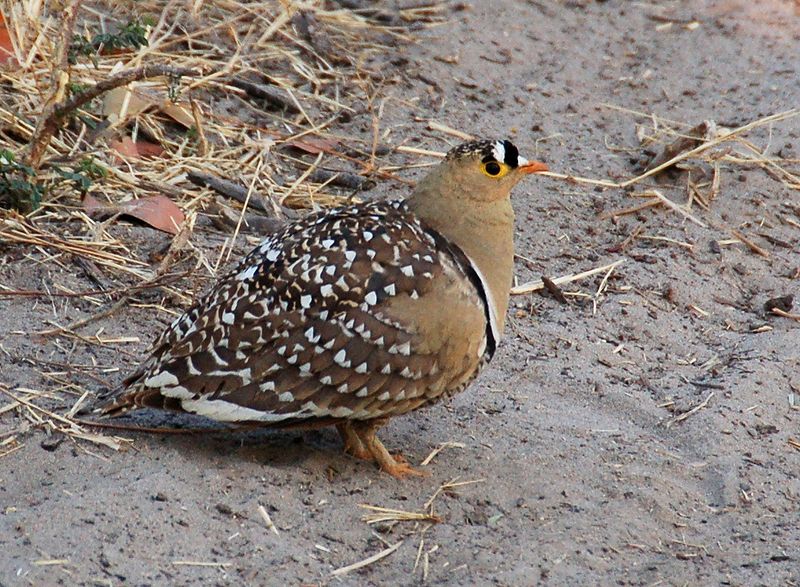
Sandgrouse is birds of the order Pterocliformes, found mainly in Africa and Asia. There are sixteen species belonging to two genera – Syrrhaptes from central Asia and Pterocles from Africa and other Asian countries.
They inhabit treeless areas such as deserts, steppes, scrubland, or savannas and tend to be ground-dwelling birds that feed on seeds.
Sandgrouse has adapted special features for survival in their harsh environment.
They possess well-developed feet with four toes used for walking over hot sand while keeping their body temperature cool at all times by regulating heat loss through their legs.
Their feathers also act like a sponge helping them absorb water before flying long distances back home where they then expel it using specialized glandular secretions located near the wings so that chicks can drink directly from an adult’s breast plumage.Scientific classification:
| Kingdom | Animalia |
| Phylum | Chordata |
| Class | Aves |
| Clade | Columbimorphae |
| Order | Pterocliformes Huxley, 1868 |
| Family | Pteroclidae Bonaparte, 1831 |
Also Featured In: Most Common Birds in China, Italian Birds You Should Know
2. Bustard
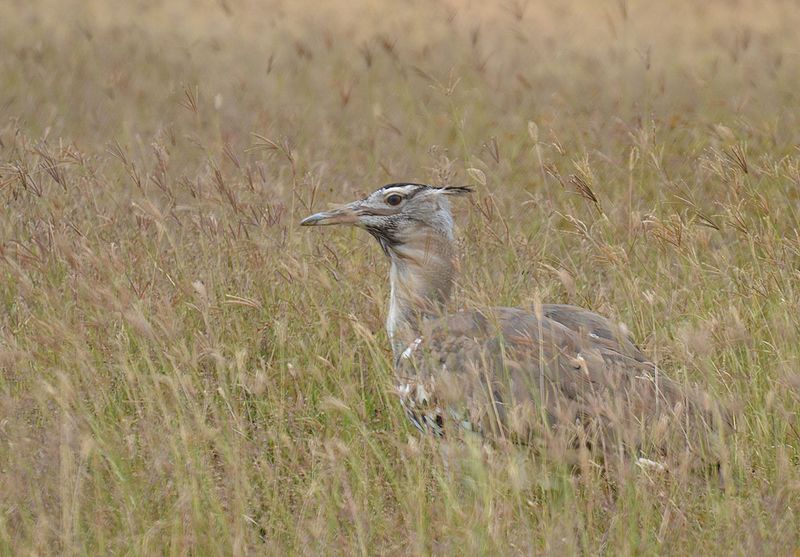
Bustards are large, terrestrial birds that inhabit dry grassland areas and the steppes of the Old World. They range from 40-150 cm in length and belong to the family Otididae.
Bustards have an omnivorous diet consisting of leaves, buds, seeds, fruit as well as small vertebrates and invertebrates.
These birds usually live a solitary life but can be seen gathering around water sources or food during certain times of year such as mating season.
Due to their large size they are vulnerable to predation by foxes or other animals which is why they tend to remain alert at all times.
When in open spaces while relying on camouflage for protection against predators when out in tall vegetation coverings.Scientific classification:
| Kingdom | Animalia |
| Phylum | Chordata |
| Class | Aves |
| Clade | Otidimorphae |
| Order | Otidiformes Wagler, 1830 |
| Family | Otididae Rafinesque, 1815 |
Also Featured In: Common Birds in India, Turkey Birds You Should Know
3. Bulbul
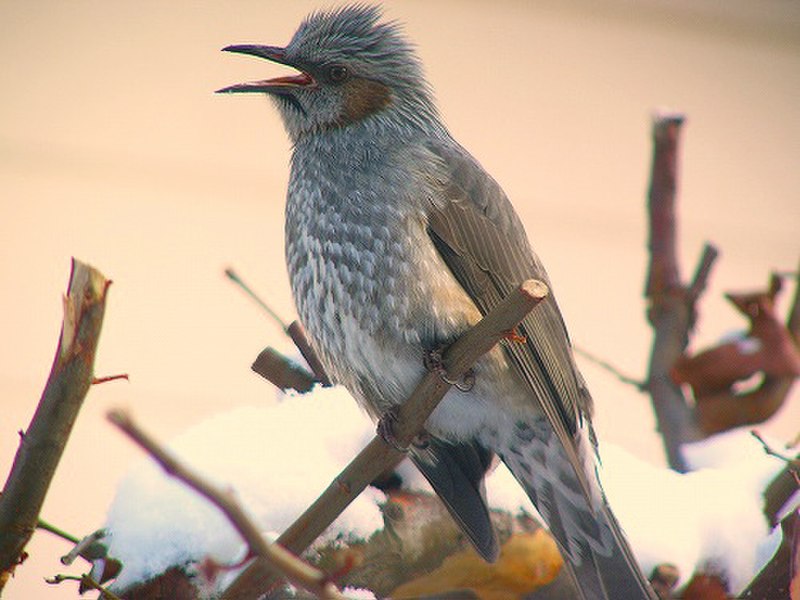
Bulbuls are a medium-sized passerine songbird family native to Africa, the Middle East and tropical Asia up until Japan. They can also be found on some of the Indian Ocean islands.
There are 160 species within 32 genera in this family which includes greenbuls, brownbuls, leafloves and bristlebills.
Bulbul birds have been known for their beautiful singing voices as well as for being very active during mating season when they gather together to create large flocks where potential mates can show off their skills.
The coloration of bulbuls range from dull greys or browns to vibrant yellows with black markings around the head region making them quite attractive creatures indeed.Scientific classification:
| Kingdom | Animalia |
| Phylum | Chordata |
| Class | Aves |
| Order | Passeriformes |
| Parvorder | Sylviida |
| Family | Pycnonotidae Gray, GR, 1840 |
Also Featured In: Syrian Birds You Need to Know, Lebanon Birds Live in Semi-Desert Areas
4. Chukar
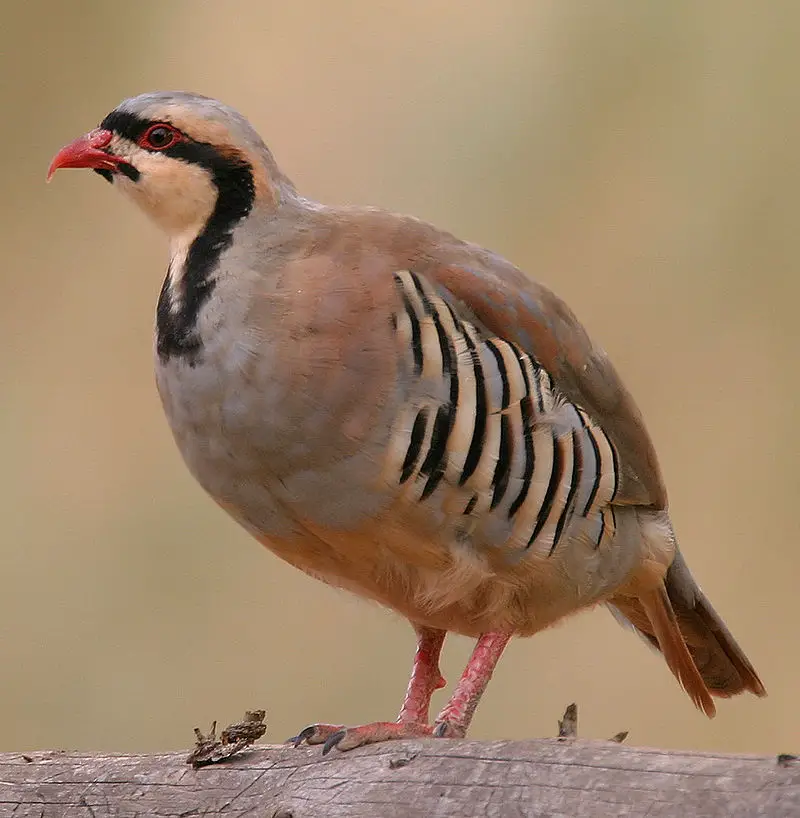
Chukar is a Palearctic upland gamebird belonging to the pheasant family. It has distinctive black and white bars on its flanks, as well as brown upperparts and buff underparts.
Its head is grey with an off-white face, throat and crest which turns chestnut in males during breeding season.
The Chukar typically lives in dry regions like open terrain or semi arid hillsides where it feeds mainly on seeds and invertebrates.
During winter months they tend to inhabit more wooded areas looking for shelter from harsh winds or snow storms.
They are social birds living in groups of up to 20 individuals but will pair off when mating season arrives.Scientific classification:
| Kingdom | Animalia |
| Phylum | Chordata |
| Class | Aves |
| Order | Galliformes |
| Family | Phasianidae |
| Genus | Alectoris |
| Species | A. chukar |
Also Featured In: Native Pakistani Birds, Hawaii Big Island Birds You Should Know
5. Collared Pratincole
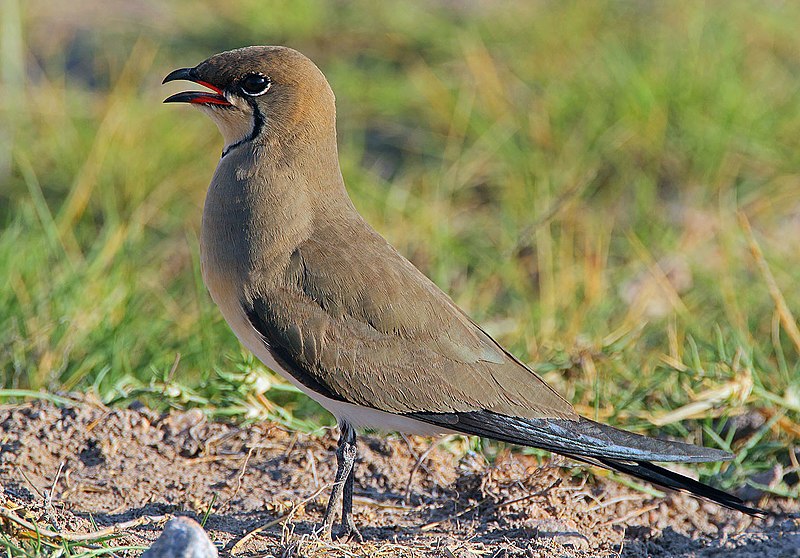
The Collared Pratincole is a small wader bird native to the Old World. It has distinctive long wings that are reddish-brown in color and have white tips, which give it its name.
Its body is mostly dark brown with some lighter spots along its back and sides. The bill of this species is short and pointed, making it a specialist for eating insects from mudflats or shallow waters.
During breeding season, they form loud flocks that can be heard from miles away when calling out their distinct song; during non-breeding time they disperse into smaller groups while searching for food sources in drier regions such as grasslands or fields.
This species relies heavily on open habitats where there are plenty of places to hunt for food throughout the year.Scientific classification:
| Kingdom | Animalia |
| Phylum | Chordata |
| Class | Aves |
| Order | Charadriiformes |
| Family | Glareolidae |
| Genus | Glareola |
| Species | G. pratincola |
Also Featured In: Beautiful Brazilian Birds, Birds Live in Tunisia
6. Grebes
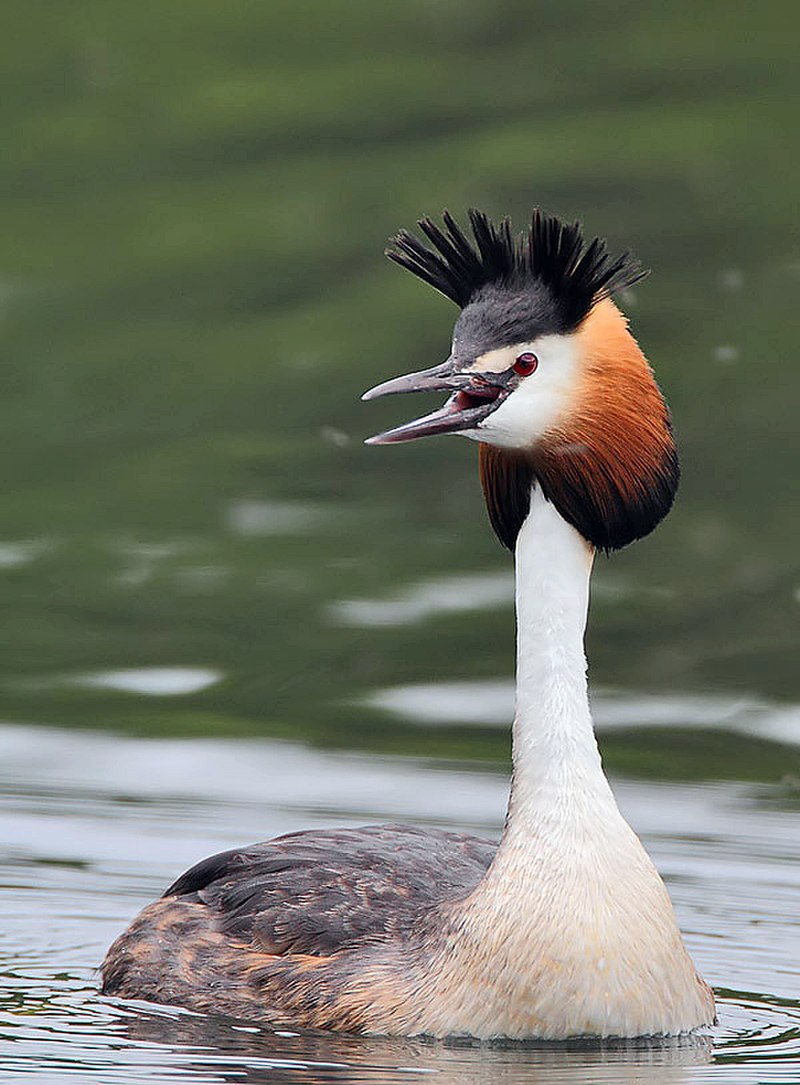
Grebes are a type of diving bird found in freshwater habitats around the world. They belong to the order Podicipediformes and have 22 species that exist across six genera.
Some species can also be found in marine environments during their migration or winter season, and some even live flightless lives on stable lakes.
Grebes vary greatly between regions; for example, they range from 4-32 inches long with anywhere from 8-30 ounces of weight depending on which species it is.
Their plumage may be black, browns/grays or whites but usually consist of bright colors such as yellows, blues and greens while underwater they use these feathers to help them streamline through the water quickly.Scientific classification:
| Kingdom | Animalia |
| Phylum | Chordata |
| Class | Aves |
| Clade | Neoaves |
| Clade | Mirandornithes |
| Order | Podicipediformes Fürbringer, 1888 |
| Family | Podicipedidae Bonaparte, 1831 |
Also Featured In: Common Birds in Japan, Water Birds Live around Us
7. Crab-Plover
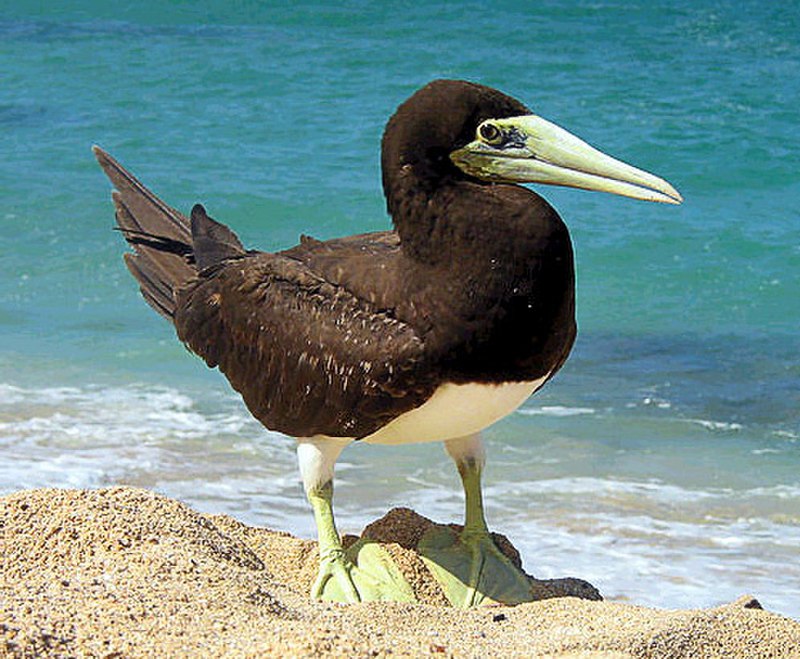
The crab-plover is an exceptional bird which belongs to its own family, Dromadidae. It appears to be closely related to the waders and other Charadriiformes such as auks, gulls and thick-knees.
This species of bird has a unique look; it is white with black markings on its head and wings. Its long bill helps them dig for food in sand or mudflats.
They can also fly up into the air when disturbed by predators or people too close for comfort.
The crab plover spends most of its life near beaches where they feed on crabs, fish eggs and small insects found there.
These birds are highly social during breeding season but solitary at other times throughout their annual cycle making them difficult creatures to spot out in the wild but well worth trying.Scientific classification:
| Kingdom | Animalia |
| Phylum | Chordata |
| Class | Aves |
| Order | Charadriiformes |
| Suborder | Lari |
| Family | Dromadidae GR Gray, 1840 |
| Genus | Dromas Paykull, 1805 |
| Species | D. ardeola |
Also Featured In: Egyptian Birds, East African Birds
8. Cream-Colored Courser
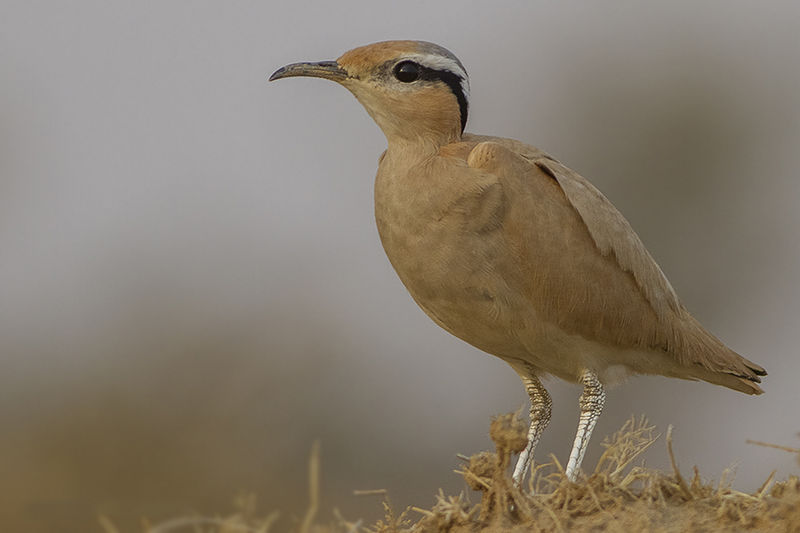
The Cream-colored Courser is a species of wader belonging to the Glareolidae family. It can be found across Western Asia and North Africa and inhabits dry, open semi-desert habitats.
These birds have adapted well to their environment; they are able to run quickly in search of insect prey on the ground which explains their scientific name Cursorius cursor – derived from Latin for ‘runner’.
The coursers also inhabit the Canary Islands as well as Cape Verde where breeding occurs during summer months before migration back south begins in autumn and winter months.
They are easily identified by their distinctive cream coloration with brown streaking along wings, neck and chest region making them an important part of these arid ecosystems.Scientific classification:
| Kingdom | Animalia |
| Phylum | Chordata |
| Class | Aves |
| Order | Charadriiformes |
| Family | Glareolidae |
| Genus | Cursorius |
| Species | C. cursor |
Also Featured In: Birds of Lanzarote, Fuerteventura Island Birds You Need to See
9. Cormorants
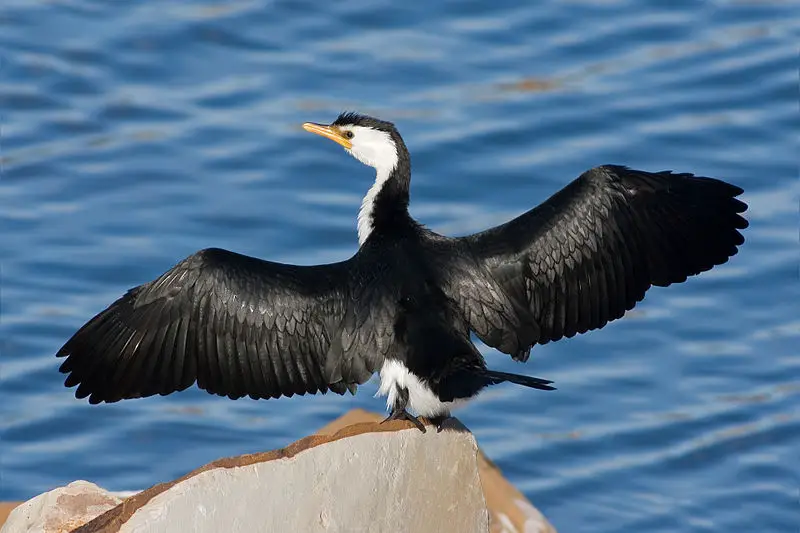
Cormorants are a family of aquatic birds found around the world. They include 40 species, such as great cormorants and common shags.
In Britain, these two species are the most commonly seen in their natural habitats.
Cormorants have long necks, webbed feet and can be identified by their glossy black feathers which they use to help them swim through water with ease as they hunt for food like fish or crustaceans.
They have an impressive wingspan often reaching up to five feet across when fully extended.
Despite being strong swimmers, these birds also enjoy spending time perched on rocks near rivers or shorelines where they will preen themselves in order to keep clean and dry during cooler weather conditionsScientific classification:
| Kingdom | Animalia |
| Phylum | Chordata |
| Class | Aves |
| Order | Suliformes |
| Family | Phalacrocoracidae Reichenbach, 1850 |
Also Featured In: Most common Birds in France, Birds You’ll Find in the Sea
10. Slender-Billed Gull
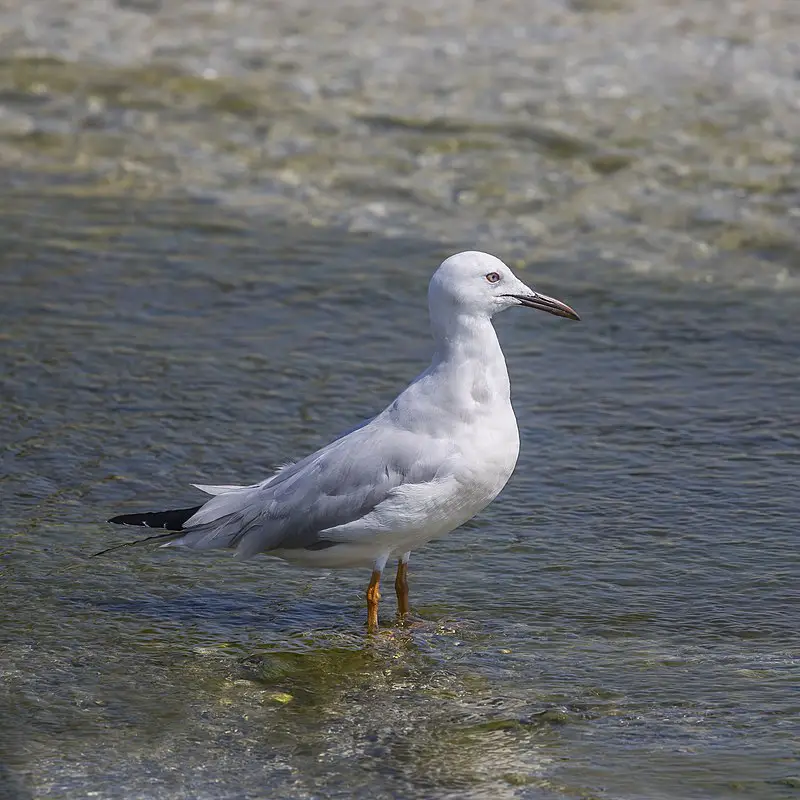
The Slender-billed Gull is a medium sized, migratory bird. It breeds in coastal lagoons and islands around the Mediterranean Sea and North Indian Ocean regions such as Pakistan.
During winter it travels further south to areas like Africa and India, but some individuals have been known to wander off towards western Europe too.
Its long slender bill gives this species its name; an unmistakable feature for identifying these birds among other gulls.
They are generally greyish-brown or white with black wingtips when seen from afar; although up close you can also make out their yellow legs and beak which contrasts nicely against its colouration.
Despite being classified as Least Concern by IUCN they still suffer threats of habitat destruction due to development projects that target their nesting sites along coastlines.Scientific classification:
| Kingdom | Animalia |
| Phylum | Chordata |
| Class | Aves |
| Order | Charadriiformes |
| Family | Laridae |
| Genus | Chroicocephalus |
| Species | C. genei |
Also Featured In: Uganda Birds Species, Ukrainian Birds You Should Know
11. Streaked Scrub Warbler
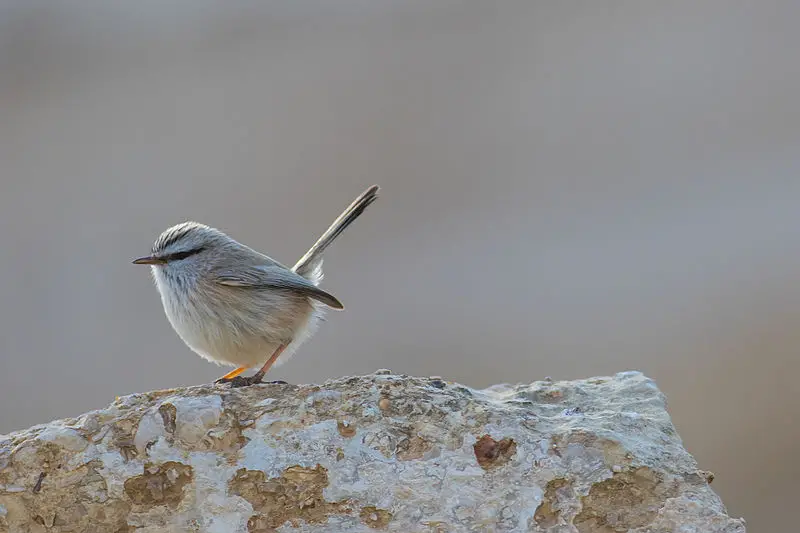
The Streaked Scrub Warbler is a small passerine bird, found in northern Africa and southwestern Asia.
It frequents scrubby areas, ravines and gorges near deserts, remaining mainly resident but with possible local movements outside the breeding season.
This species has grayish-brown upperparts streaked with black lines or bars forming an intricate pattern across its back; whitish underparts are also marked by dark streaks on the breast.
Its diet consists of insects which it catches from low vegetation while making short flights over them to capture prey as well as gleaned items from branches or foliage surface foraged on foot.
The Streak Scrub Warbler is quite vocal throughout the year giving various trills and whistles that sound like “seet”.Scientific classification:
| Kingdom | Animalia |
| Phylum | Chordata |
| Class | Aves |
| Order | Passeriformes |
| Family | Scotocercidae Fregin, Haase, Olsson, & Alström, 2012 |
| Genus | Scotocerca Sundevall, 1872 |
| Species | S. inquieta |
Also Featured In: Native Birds of Afghanistan, Common Algerian Birds
12. Eurasian Penduline Tit
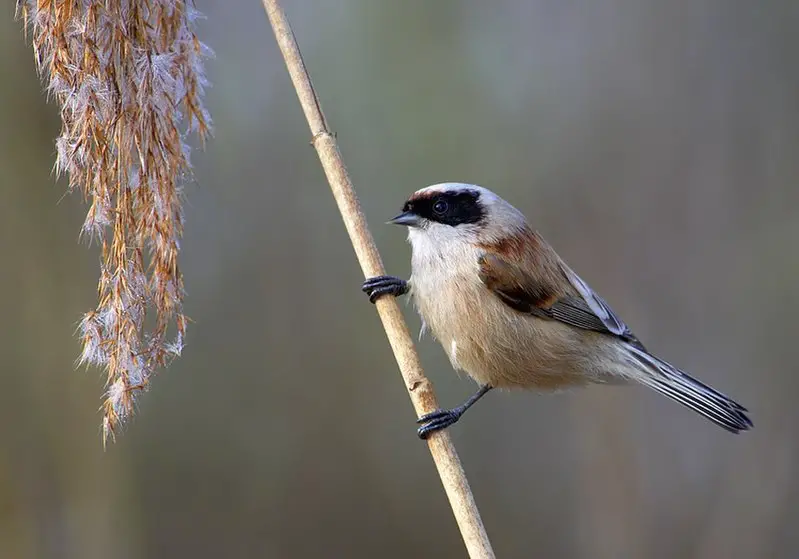
The Eurasian penduline tit is a passerine bird of the genus Remiz which can be found widely across the western Palearctic.
It migrates to more northern parts in summer, while staying resident in its southern range during winter months.
This species experienced an expansion of its breeding grounds throughout Western Europe between 1980s and 1990s, thus increasing its population significantly.
The Penduline Tit has various striking features like bright yellow underparts with black streaks on sides.
Greyish-brown upper part with white underside and pale eye line along head sides as well as distinctive tail nest made from fibers and mosses hanging from trees or shrubs like a pendulum hence their name ‘Penduline’.
These birds feed mainly on insects but also eat some seeds especially sunflower seeds making them popular garden visitors for many people.Scientific classification:
| Kingdom | Animalia |
| Phylum | Chordata |
| Class | Aves |
| Order | Passeriformes |
| Family | Remizidae |
| Genus | Remiz |
| Species | R. pendulinus |
Also Featured In: Birds of Morocco, Native Birds of Kazakhstan
13. Sylviid Warblers
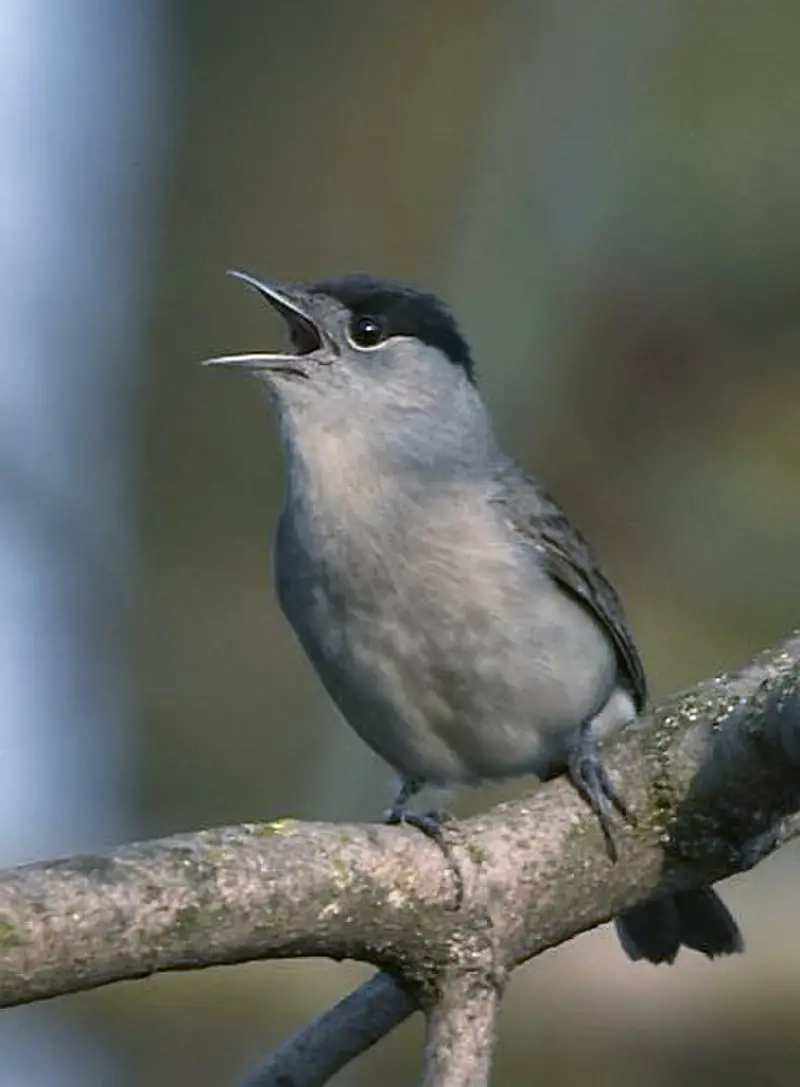
The Sylviid warblers are a family of passerine birds found in Eurasia and Africa. They include the typical warblers as well as babblers that were formerly part of the Old World babbler family.
These birds have slender bodies, pointed wings, long tails and strong legs adapted for ground-dwelling habits like running or hopping along branches.
The male often has bright colors while females are usually duller in coloration with more muted plumage patterns than males.
Some species also show sexual dimorphism where one sex may be larger or smaller than its counterpart; for instance some species may have longer tail feathers on the female side compared to their male counterparts.
Many members of this group feed on insects but some specialize on seeds, fruits, nectar or even frogs.Scientific classification:
| Kingdom | Animalia |
| Phylum | Chordata |
| Class | Aves |
| Order | Passeriformes |
| Superfamily | Sylvioidea |
| Family | Sylviidae Leach, 1820 |
Also Featured In: Birds Found in Hungary, Belarus Birds You Should Know
14. Long-Tailed Tits
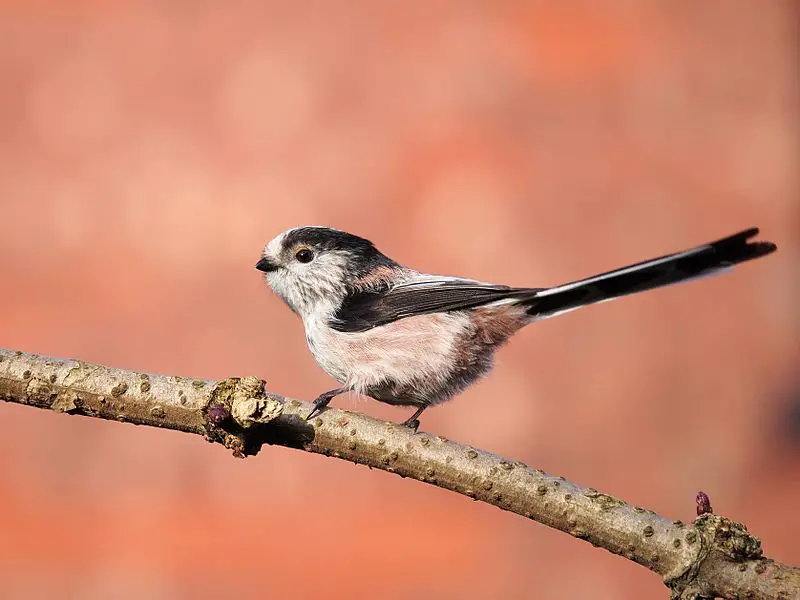
Long-tailed tits are a small passerine bird family with long tails compared to their size. They have 13 species in 3 genera, and they mostly live in Eurasia.
These birds love to stay active by foraging for insects among shrubs and trees throughout the day.
During non-breeding season, these birds can be found living together in large flocks of up to 50 individuals.
These playful little creatures make wonderful companions due to their social nature and cheerful personalities.
Their bright plumage also adds a beautiful splash of colour wherever they go.Scientific classification:
| Kingdom | Animalia |
| Phylum | Chordata |
| Class | Aves |
| Order | Passeriformes |
| Superfamily | Sylvioidea |
| Family | Aegithalidae Reichenbach, 1850 |
Also Featured In: Bulgarian Birds, Common Denmark Birds
15. Laughingthrushes
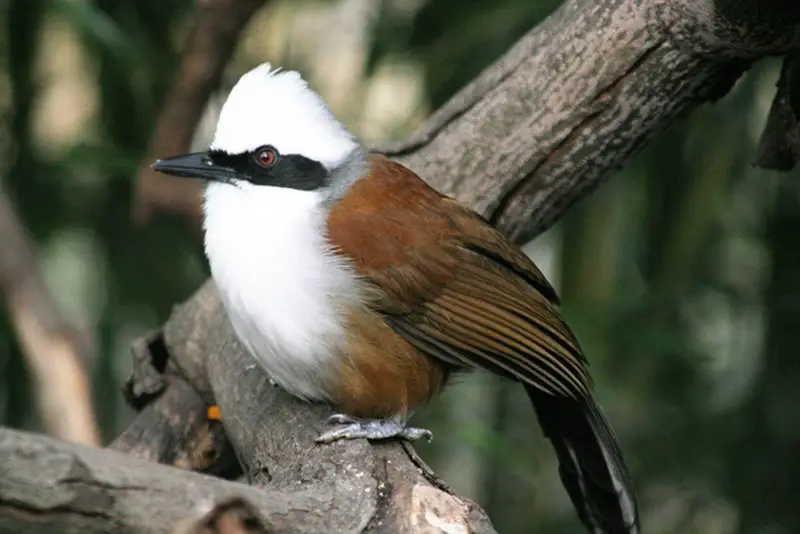
Laughingthrushes are a family of passerine birds found in tropical areas, primarily Southeast Asia and the Indian subcontinent.
They vary greatly in size and coloration but generally they have strong legs and many species are terrestrial or semi-terrestrial.
These birds typically inhabit forests where they feed on insects, fruits, seeds and occasionally small vertebrates.
The diet varies depending on the species as some prefer to forage among foliage while others look for food along the forest floor or take it from trees high up in their habitat.
In general these active creatures live in flocks that can range from just a few individuals to large groups with dozens of members making them quite vocal at times.Scientific classification:
| Kingdom | Animalia |
| Phylum | Chordata |
| Class | Aves |
| Order | Passeriformes |
| Superfamily | Sylvioidea |
| Family | Leiothrichidae Swainson, 1832 |
Also Featured In: Birds Commonly Found in Slovenia, Most Common Taiwan Birds
16. White-Tailed Lapwing
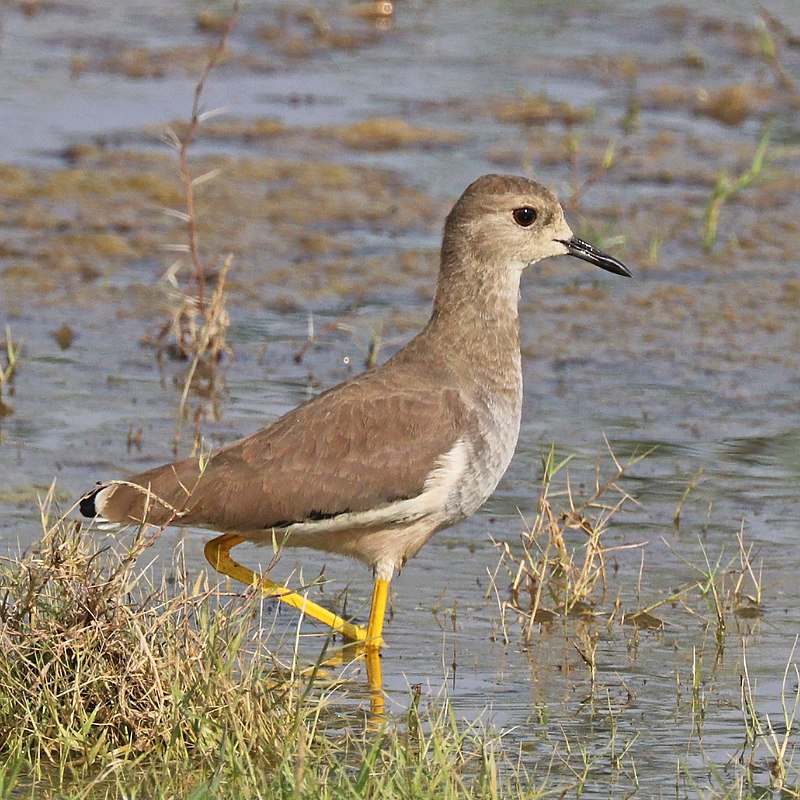
The White-tailed Lapwing is a stunning wader bird which belongs to the lapwing genus and can be identified by its long legs, long bill and striking white tail feathers.
Its Latin name Vanellus leucurus means ‘white tailed winnowing fan’ reflecting the birds habitat of open grassland meadows across Europe, Asia and Africa.
It feeds on insects in short vegetation or bare ground during breeding season but will also eat small invertebrates such as earthworms when available.
During nonbreeding season it spends most of its time roosting in flocks near water bodies like estuaries or lagoons where food sources are plentiful.
The species faces threats from human activities such as loss of wetland habitats due to pollution so conservation efforts should focus on protecting these areas for this beautiful creature’s future survival.Scientific classification:
| Kingdom | Animalia |
| Phylum | Chordata |
| Class | Aves |
| Order | Charadriiformes |
| Family | Charadriidae |
| Genus | Vanellus |
| Species | V. leucurus |
Also Featured In: Common Birds in Saudi Arabian, Birds that Live in Rajasthan
17. Locustellidae
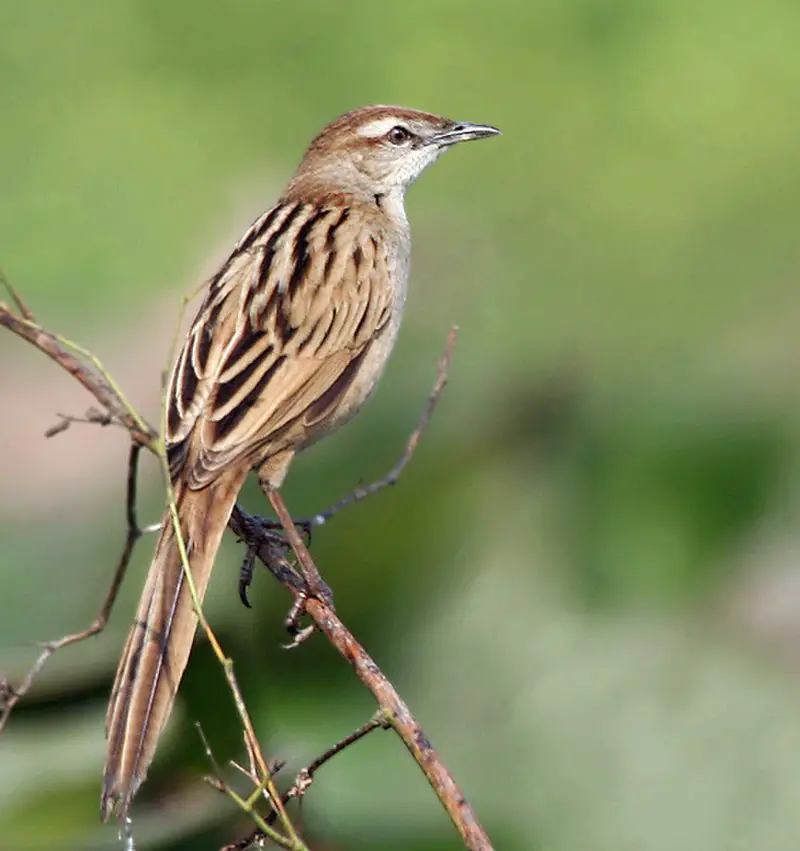
Locustellidae is a family of small insectivorous songbirds, commonly known as warblers. They are found mainly in Eurasia, Africa and the Australian region.
These birds typically have plain coloring on their wings and tail but with brightly colored patches on their face or neck.
Their diet consists mostly of insects and other invertebrates which they capture while foraging among grasses or bushes.
Locustellidae species also possess a distinctive vocalization that can be heard at dawn or dusk; it has been described as an intermittent trill lasting several seconds to minutes in length without any pauses between notes.
As active little birds, they make excellent additions to gardens providing hours of delight with their singing abilities.Scientific classification:
| Kingdom | Animalia |
| Phylum | Chordata |
| Class | Aves |
| Order | Passeriformes |
| Superfamily | Sylvioidea |
| Family | Locustellidae Bonaparte, 1854 |
Also Featured In: Birds of Czech Republic, Birds of Sweden
18. Acrocephalidae
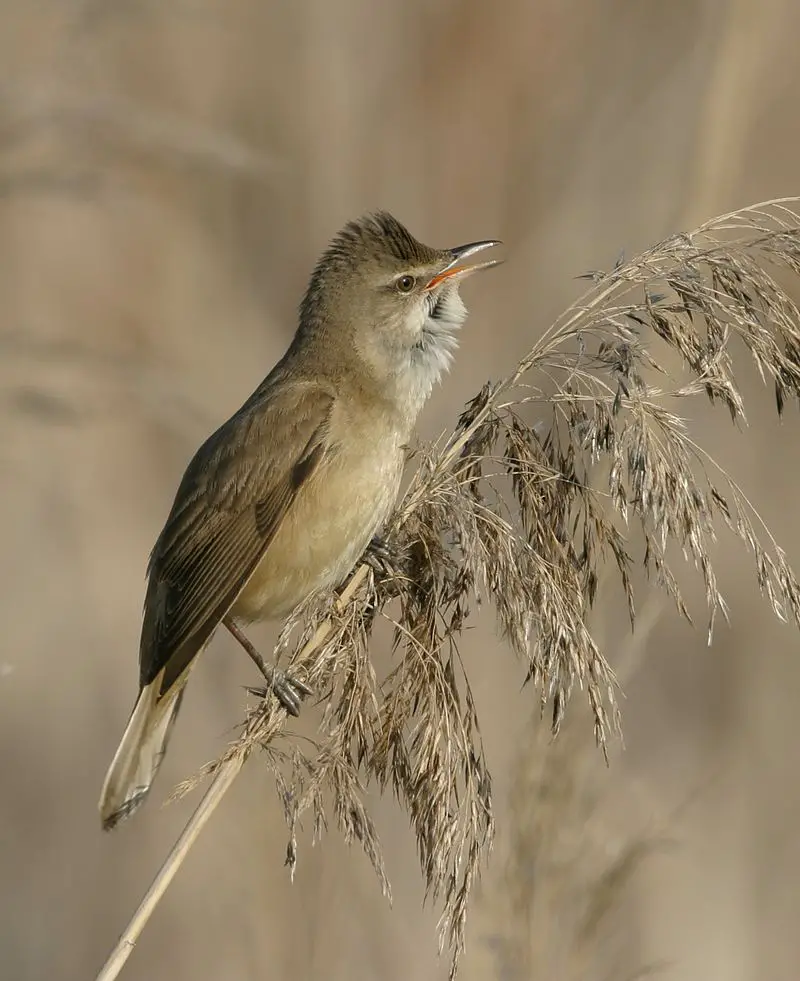
The Acrocephalidae, commonly known as reed warblers, marsh- and tree-warblers or acrocephalid warblers are a family of passerine birds belonging to the superfamily Sylvioidea.
These birds typically have an olivaceous brown top with yellowish to beige underside. They can mostly be spotted in open woodlands, reed beds or tall grasses.
This family comprises about 130 species spread across Eurasia and Africa which includes some vagrant species too.
Most of these bird families feed on insects like spiders, beetles etc., while others also consume small fruits such as berries.
They make nests close to ground level by weaving twigs together using their saliva for binding them making it waterproof enough so that eggs stay safe from rainwater during breeding season.Scientific classification:
| Kingdom | Animalia |
| Phylum | Chordata |
| Class | Aves |
| Order | Passeriformes |
| Superfamily | Sylvioidea |
| Family | Acrocephalidae Salvin, 1882 |
Also Featured In: Birds of United Arab Emirates, Birds that Live in Croatia
19. Black-Bellied Sandgrouse
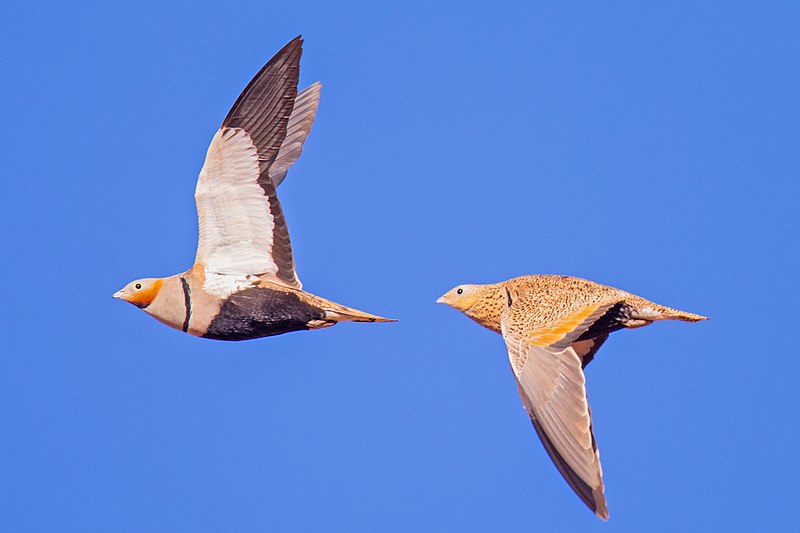
The Black-bellied sandgrouse is a species of medium large bird in the family Pteroclididae. It breeds across Iberia, northwest Africa, Turkey, Iran and Israel as well as on the Canary Islands and Cyprus.
The eastern form of this species can be found in Kazakhstan, western China and northern Pakistan where it migrates seasonally from central Asia.
This ground dwelling bird has greyish – brown plumage with barred underparts while its belly is black which gives it its name ‘Black-bellied Sandgrouse’.
Its diet consists mainly of seeds picked up on open dry groud or short vegetation close to water sources.Scientific classification:
| Kingdom | Animalia |
| Phylum | Chordata |
| Class | Aves |
| Order | Pterocliformes |
| Family | Pteroclidae |
| Genus | Pterocles |
| Species | P. orientalis |
Also Featured In: Kyrgyzstan Birds,
20. Pin-Tailed Sandgrouse
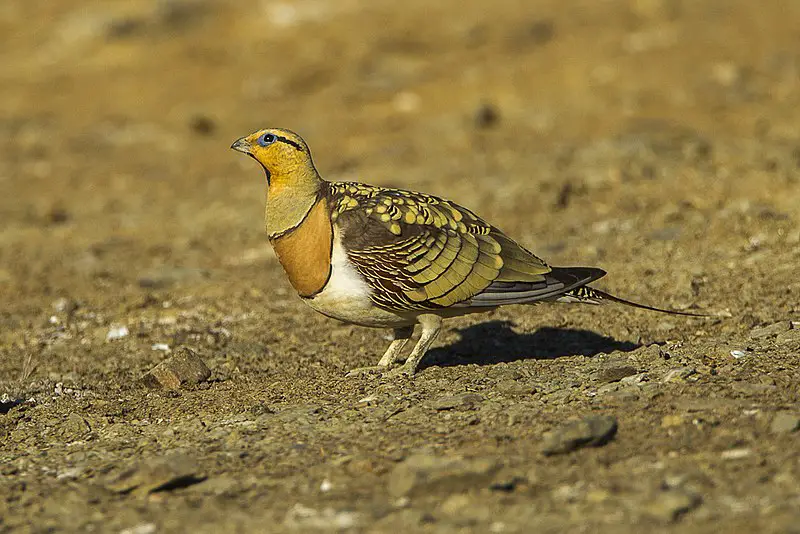
The Pin-tailed Sandgrouse is a medium-sized bird with a small, pigeon-like head and neck and sturdy body. It has long pointed wings that are white underneath, as well as a long tail and fast direct flight.
They congregate in flocks to watering holes at dawn, making loud calls of “kattar-kattar”. This social species lives on open treeless plains or similar areas where they can find food such as seeds or insects.
During breeding season the male will perform an impressive display which involves fanning out its tail feathers while displaying his bright yellow eye patch to attract females.
The male also provides water for the female by sopping up moisture from damp ground in its breast feathers before flying back to meet her at their nest site where she incubates their eggs until hatching occurs.
These birds have adapted over time to survive some harsh climates but now face threats due to habitat destruction and hunting pressure; conservation efforts must be put into place if we are going keep this incredible species alive for future generations.Scientific classification:
| Kingdom | Animalia |
| Phylum | Chordata |
| Class | Aves |
| Order | Pterocliformes |
| Family | Pteroclidae |
| Genus | Pterocles |
| Species | P. alchata |
Also Featured In: Kuwait Birds, Birds that Live in the Deserts
21. White-Eared Bulbul
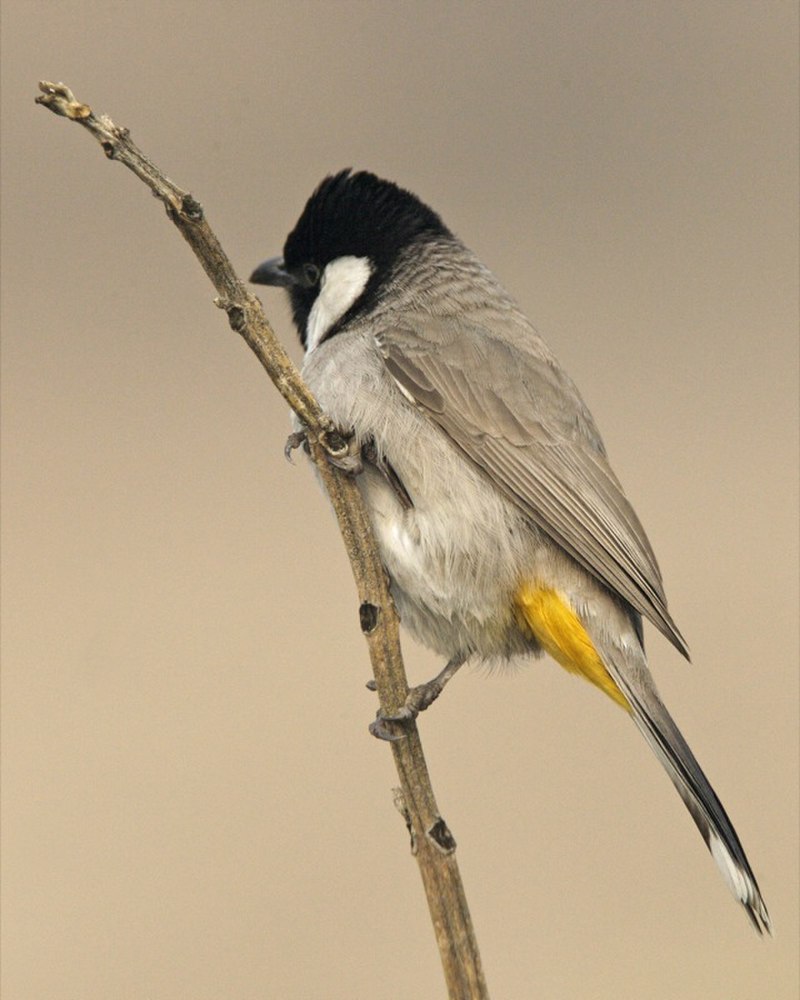
The white-eared bulbul is a member of the Pycnonotus genus and belongs to the Bulbul family. It inhabits south-western Asia from India to Arabia, where it can be seen in open woodlands or even gardens.
This species has long been recognized as one of six similar bulbuls that make up a superspecies, including Himalayan bulbul, White-spectacled bulbul, African Red-eyed Bulbuls and Cape Bulbuls.
The bird is brownish gray with reddish tints on its back and wings while its head is greyish with yellow eyes surrounded by a thin white eye ring which gives this species its name .
They feed mainly on fruits but also take insects like ants , grasshoppers , beetles etc . Their diet includes berries , seeds and flowers too.
In addition they are known for their loud vocalizations when alarmed making them an easily identifiable companion in any outdoor setting.Scientific classification:
| Kingdom | Animalia |
| Phylum | Chordata |
| Class | Aves |
| Order | Passeriformes |
| Family | Pycnonotidae |
| Genus | Pycnonotus |
| Species | P. leucotis |
Also Featured In: Bahrain birds, Common United Arab Emirates Small Birds
22. White-Winged Tern
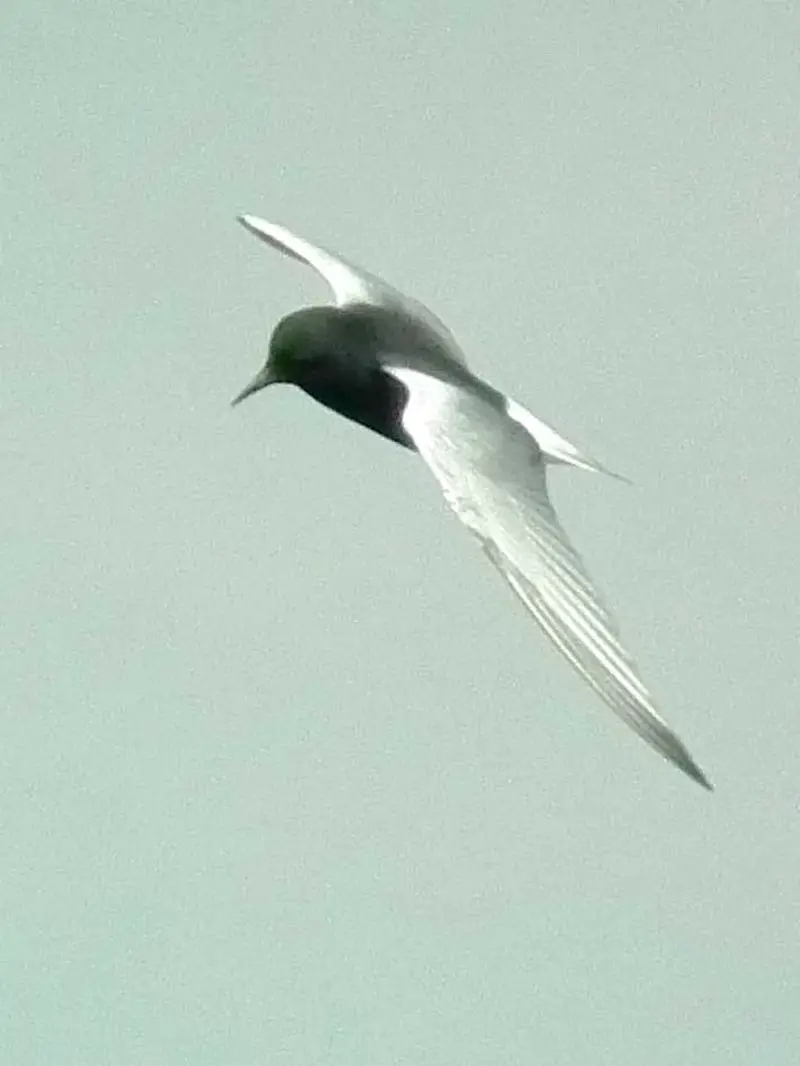
The White-winged Tern is a small species of tern found across much of the world, from Europe to Africa and Asia, inhabiting fresh water habitats.
With its scientific name Chlidonias leucopterus or Chlidonias leucoptera coming from Ancient Greek meaning ‘swallow-like’, it has white wings giving it an unmistakable appearance in flight.
It feeds on insects by swooping down over water surfaces at high speed and snatching them up with its beak while skimming the surface.
This bird also nests near bodies of freshwater such as lakes, rivers and marshes making use of reeds for cover against predators when they’re raising their chicks.
A beautiful sight to behold wherever they are found.Scientific classification:
| Kingdom | Animalia |
| Phylum | Chordata |
| Class | Aves |
| Order | Charadriiformes |
| Family | Laridae |
| Genus | Chlidonias |
| Species | C. leucopterus |
Also Featured In: Common Serbian Birds, Birds You’ll Find in Albania
23. Temminck’s Stint
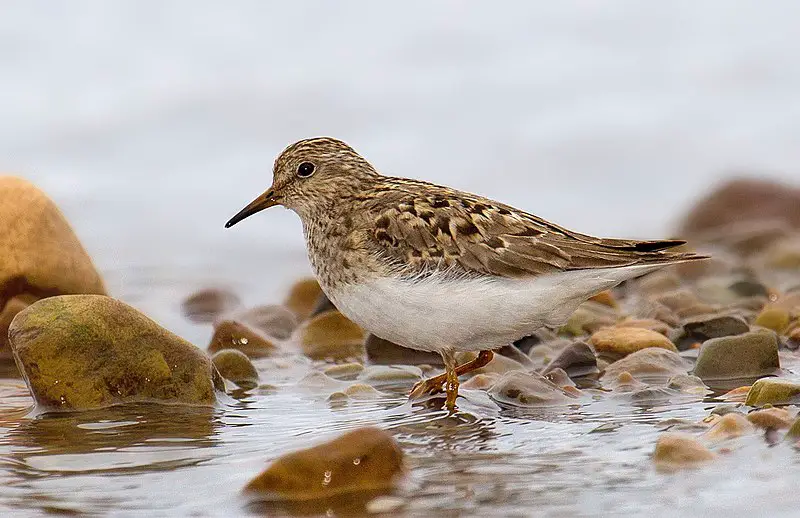
Temminck’s stint (Calidris temminckii) is a small, grey-coloured wader named after the Dutch naturalist Coenraad Jacob Temminck.
This species migrates between its breeding grounds in Europe and wintering sites across Africa and Asia, covering vast distances along the way.
It has been identified as being particularly vulnerable to changes in habitat due to land use changes on migration flyways or at stopover locations.
For this reason, it is listed under the Agreement on the Conservation of African-Eurasian Migratory Waterbirds (AEWA).
Due to declining populations caused by human activities such as drainage of wetlands for agriculture, conservation measures are needed if we want future generations to admire this remarkable bird.Scientific classification:
| Kingdom | Animalia |
| Phylum | Chordata |
| Class | Aves |
| Order | Charadriiformes |
| Family | Scolopacidae |
| Genus | Calidris |
| Species | C. temminckii |
Also Featured In: Luxembourg birds, Most Common Birds Live in Osaka
24. Sittidae
Sittidae birds, also known as nuthatches, are a family of small passerine birds found in temperate and subtropical regions across the world.
They are typically small, compact birds with short tails and strong legs, which they use to climb trees in search of food.
Nuthatches are known for their unique habit of climbing down trees headfirst, using their long toes to grip the bark as they move.
They have an omnivorous diet that includes insects, nuts, seeds, and berries. Nuthatches are monogamous and breed in tree cavities, creating a nest made of grass, bark, and feathers.
They are important members of their ecosystems, helping to disperse seeds and control insect populations.
Nuthatches are also popular among birdwatchers for their distinctive appearance and behavior, making them a favorite subject for nature photography.
25. Marsh Sandpiper
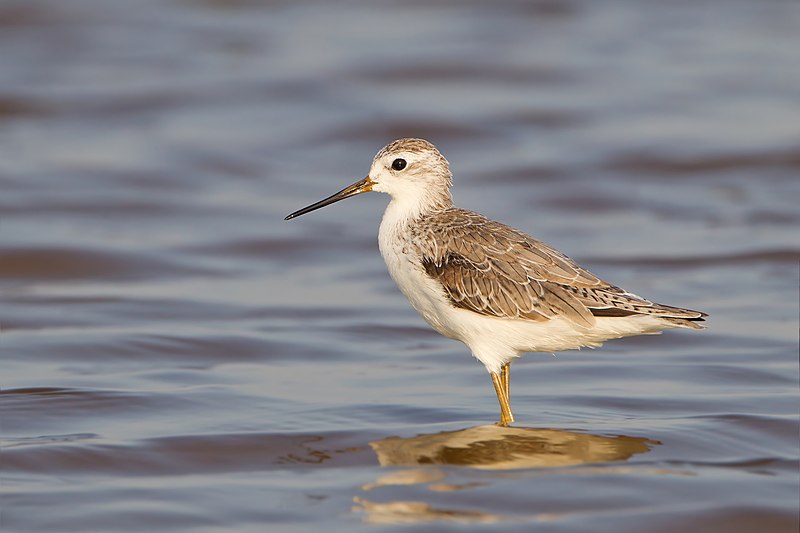
The Marsh sandpiper is a small wading bird that can be found in wetlands across easternmost Europe to the Russian Far East. They prefer open grassy steppe and taiga areas for breeding.
The genus name, Tringa, was given based on the Ancient Greek trungas, a white-rumped, tail-bobbing bird mentioned by Aristotle.
Marsh sandpipers are known to be rather small shanks and are distinct in their appearance.
They have a slim figure and slender legs that make them well-suited for moving through mud and water.
In addition to their physical characteristics, they also have a unique call that can be used for communication and attracting mates.
Overall, the Marsh sandpiper is an interesting and valuable bird species that plays an important role in its ecosystem.Scientific classification:
| Kingdom | Animalia |
| Phylum | Chordata |
| Class | Aves |
| Order | Charadriiformes |
| Family | Scolopacidae |
| Genus | Tringa |
| Species | T. stagnatilis |
Also Featured In: Armenian Birds You Should Know, Birds that Migrate to Sri Lankan
26. Grey-Necked Bunting
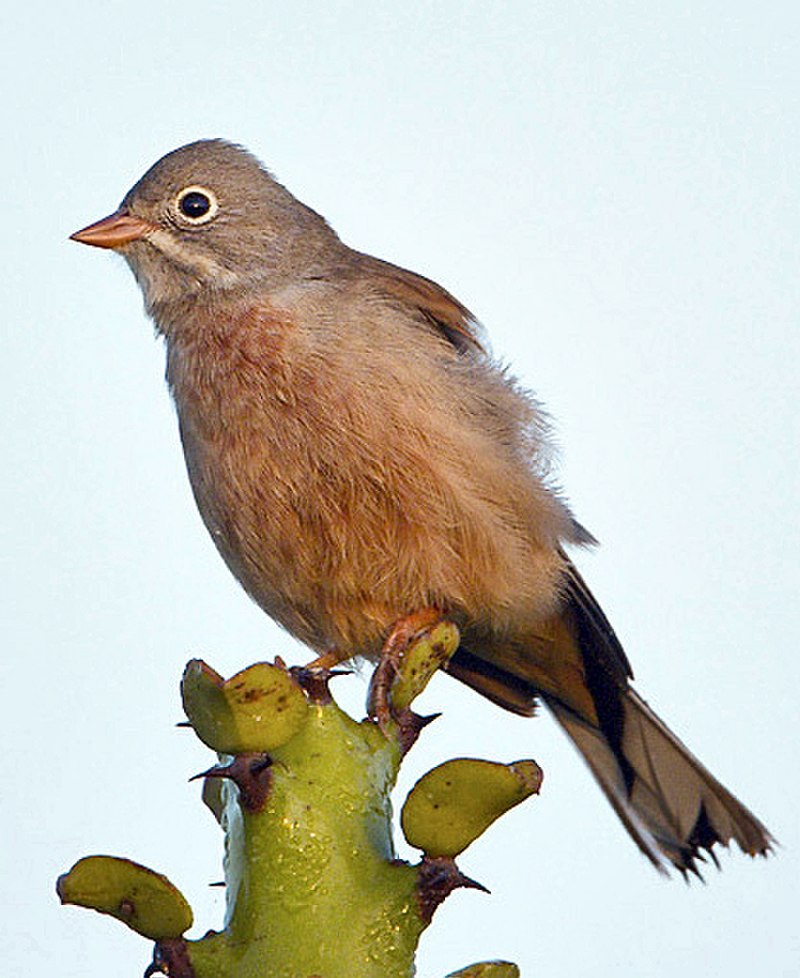
The grey-necked bunting, also known as the grey-hooded bunting, is a species of bird in the emberizidae family. It breeds throughout Central Asia and winters in Southern Asia.
This bunting is commonly found in small flocks and has a distinctive grey hood. It has a unique call and is often a shy bird, hiding in bushes and undergrowth.
The grey-necked bunting has a wide distribution range, covering areas from the Caspian Sea to the Altai Mountains.
It is a small bird, usually measuring around 15 cm in length and consuming primarily seeds and insects.
Overall, the grey-necked bunting is an interesting and elusive bird species that can be found in a variety of Central and Southern Asian habitats.Scientific classification:
| Kingdom | Animalia |
| Phylum | Chordata |
| Class | Aves |
| Order | Passeriformes |
| Family | Emberizidae |
| Genus | Emberiza |
| Species | E. buchanani |
27. Red-Fronted Serin
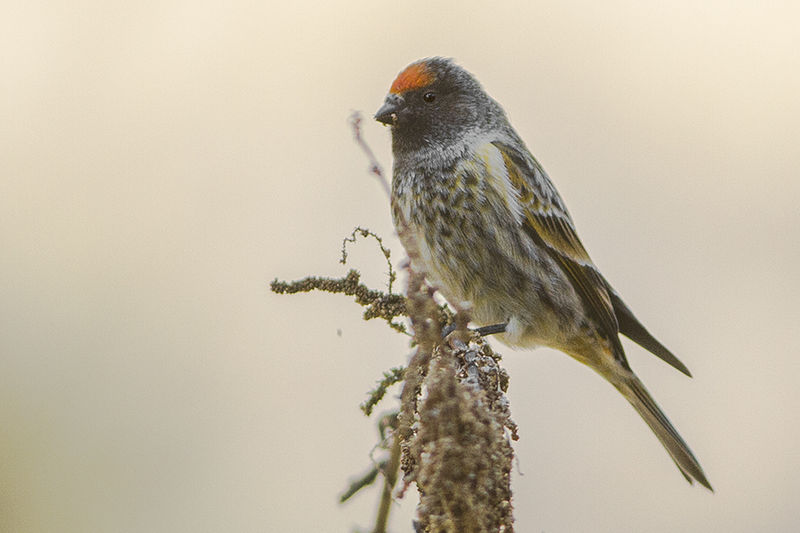
The Red-fronted serin, also known as the fire-fronted serin, is a tiny passerine bird belonging to the finch family. It has a preference for mountainous regions and typically grows up to 11-12 cm in length.
This bird can be found breeding in areas such as the Caucasus, Turkey, and Iran, with rare sightings of it reaching the Greek Eastern Aegean Islands during winter. Apart from this, the Red-fronted serin can also be found in the Ladakh region of India.
With its striking red front, this bird is a sight to behold in its natural habitat.Scientific classification:
| Kingdom | Animalia |
| Phylum | Chordata |
| Class | Aves |
| Order | Passeriformes |
| Family | Fringillidae |
| Subfamily | Carduelinae |
| Genus | Serinus |
| Species | S. pusillus |
Also Featured In: Common Uzbekistan Birds, Birds of Ladakh
28. Rock Bunting
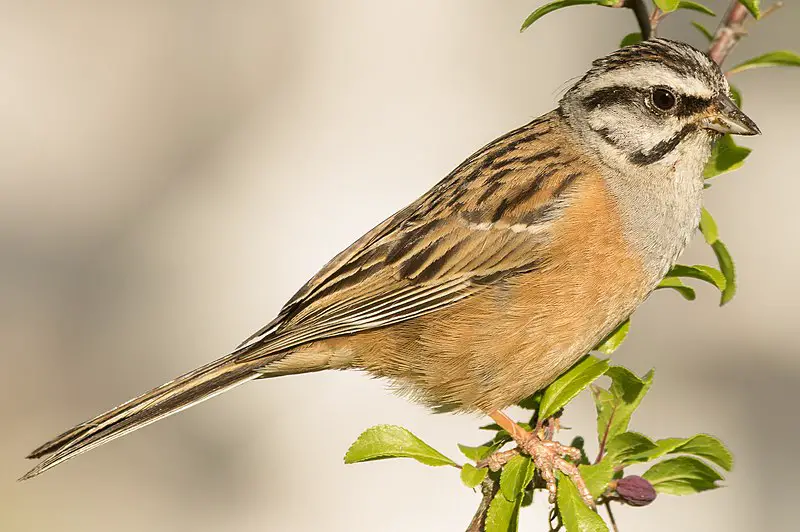
The rock bunting is a small bird belonging to the bunting family Emberizidae. It is found in northwest Africa, southern Europe, central Asia, and the Himalayas.
The genus name of the bird is Emberiza, which is derived from the Old German word Embritz.
The name Emberiza cia is derived from a local Italian name that means “to chirp.” The rock bunting is not a finch, despite being in the same family as finches.
It is a passerine bird. The bird’s habitat includes rocky mountain slopes, hillsides, and stony areas. The rock bunting’s diet consists of insects and seeds.
During breeding season, the male rock bunting sings a cheerful song to attract a mate. The rock bunting is a migratory bird, flying to warmer regions during the winter months.Scientific classification:
| Kingdom | Animalia |
| Phylum | Chordata |
| Class | Aves |
| Order | Passeriformes |
| Family | Emberizidae |
| Genus | Emberiza |
| Species | E. cia |